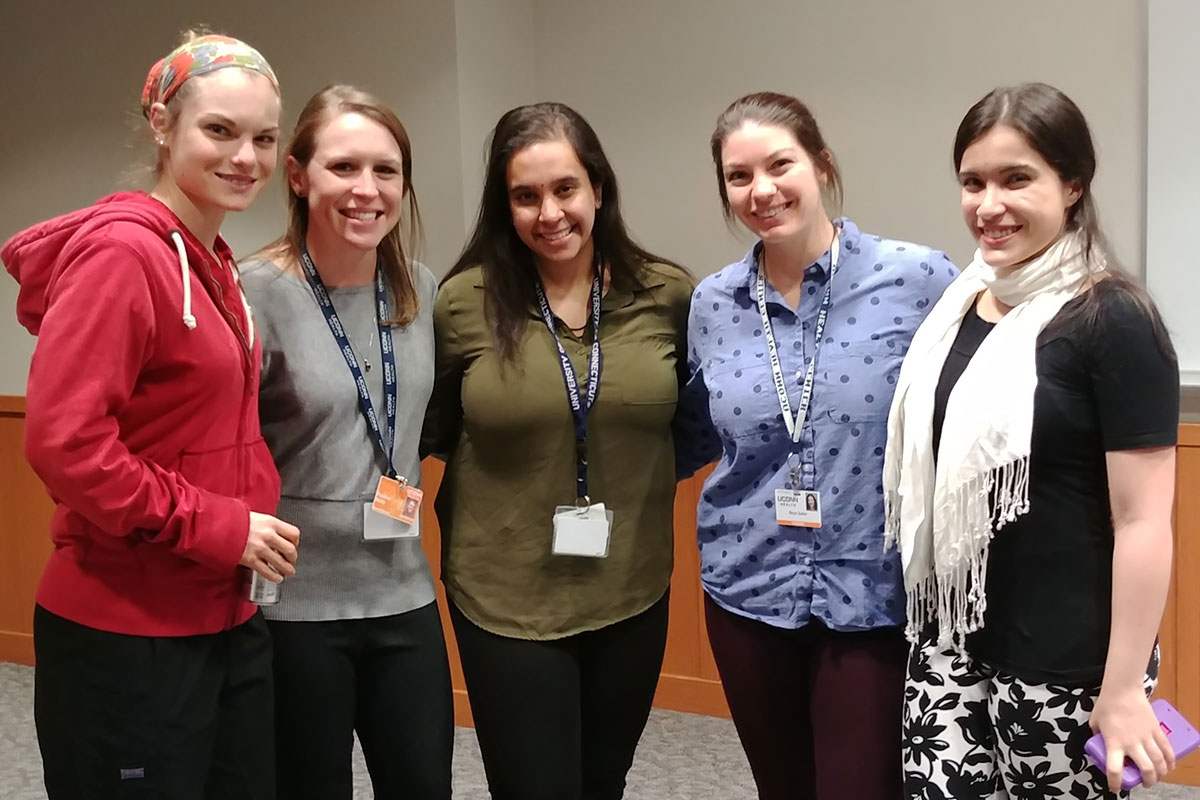In the highly competitive world of dental residency placements, the UConn School of Dental Medicine continues its high rate of success year after year.
The Class of 2018 is no different. Of the 43 students, 40 sought residency programs, and all 40 found one.
That’s more on par with the medical school residency match than national average for dental schools. The aggregate residency placement rate in American dental schools is less than 50 percent.
“The competition to get into this limited number of residency positions is increasing each year, and the fact that we’re successful each year to the extent we are is pretty impressive,” says Dr. R. Lamont “Monty” MacNeil, dean of the UConn School of Dental Medicine. “It’s really become part of our culture. We don’t set it as a requirement or expectation, but most of our students agree that it’s a good preparation for the rigors and realities of practice.”
The breakdown this year:
- General practice dentistry: 15 students
- Oral and maxillofacial surgery: 6
- Orthodontics: 5
- Prosthodontics: 5
- Advanced education general dentistry: 4
- Pediatric dentistry: 4
- Endodontics: 1
Three others will go directly into private practice.
Oral surgery, orthodontics, and pediatric dentistry are among the most competitive residencies, and it’s in those specialties where the school’s reputation can be a difference maker.
“Our program is viewed as one of the best in the country, a rigorous, medically oriented, well rounded program,” MacNeil says. “The other dimension to this is the quality of previous graduates who have perhaps placed in the same residency programs; they have set the standard for what our graduates can do. The reputation of the school and our graduates then speaks for itself.”
Seventeen of the students landed in a Connecticut residency program; 11 of them are staying at UConn for their residency training.
Unlike Match Day for medical students, an orchestrated affair in which students throughout the country learn their placements at the same time in the middle of March, the dental match comes in phases. Ten UConn dental students learned their residency match in December. The rest found out in an email the morning of Jan. 29. The school held a reception for the students that afternoon.
Adding to the relative scarcity of dental residency positions is the fact that they haven’t been keeping pace with the nearly 25 percent growth in dental school placements over the last 10 years. A few states, including New York and Delaware, require residency training to be eligible for a license to practice dentistry. The American Dental Education Association is advocating for expansion and growth of residency positions.
“These positions provide huge amounts of care to the public, especially the disadvantaged public, because many of these residency programs are through hospitals or in disadvantaged areas,” MacNeil says. “Like in medicine, residency programs provide care to needy patients in a unique dimension.”



